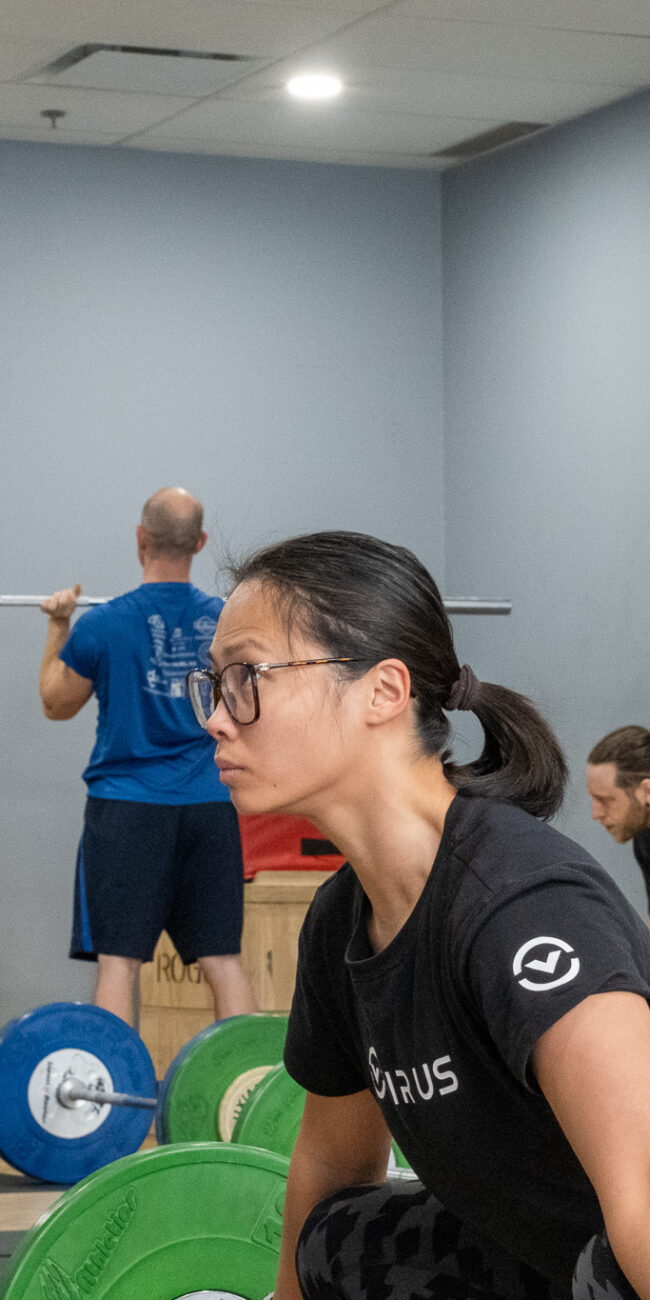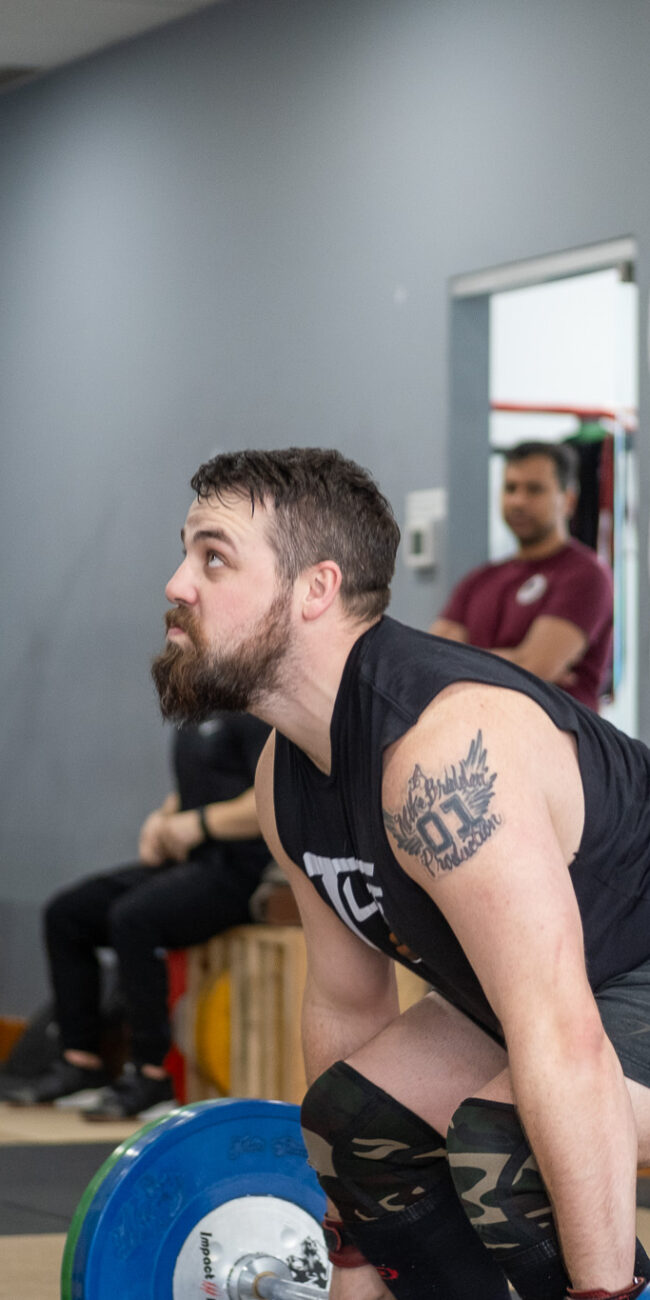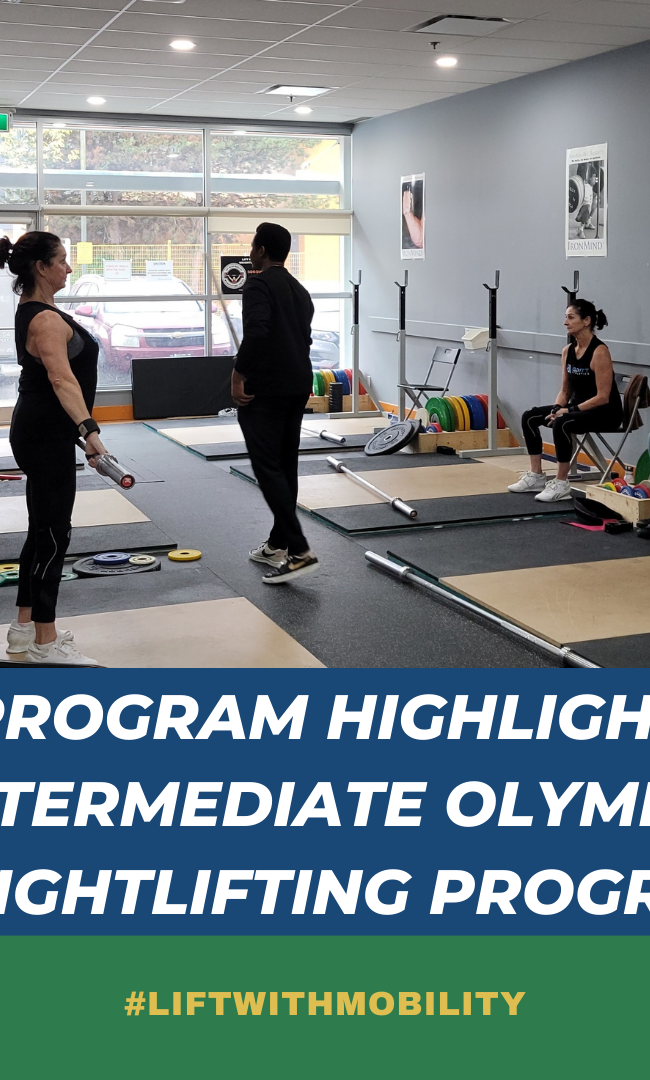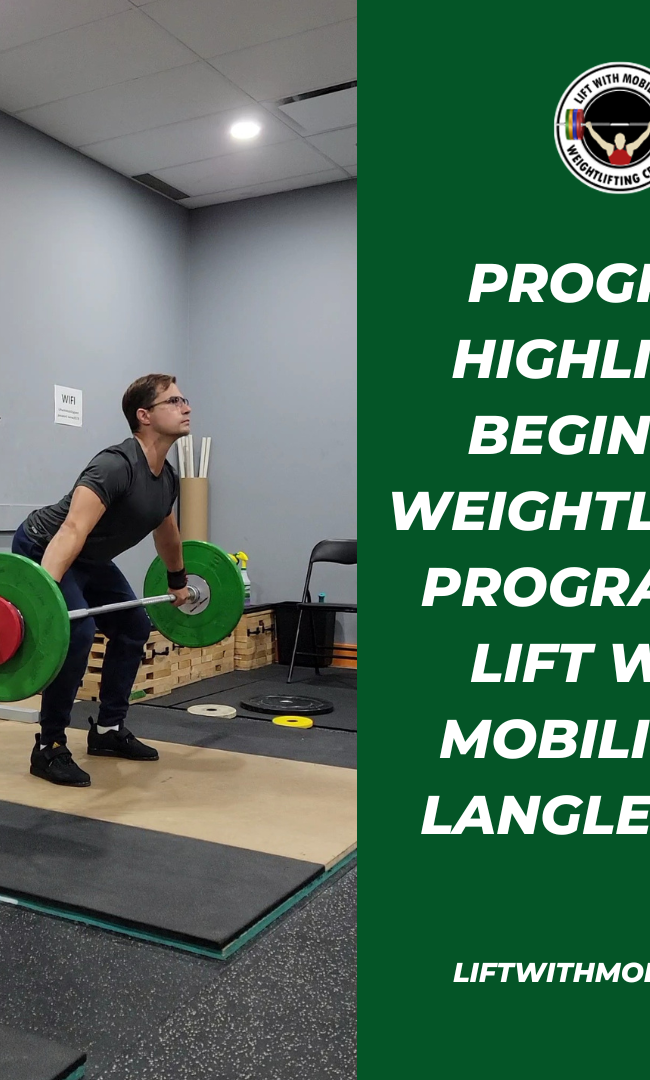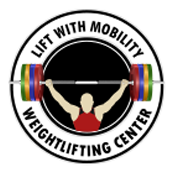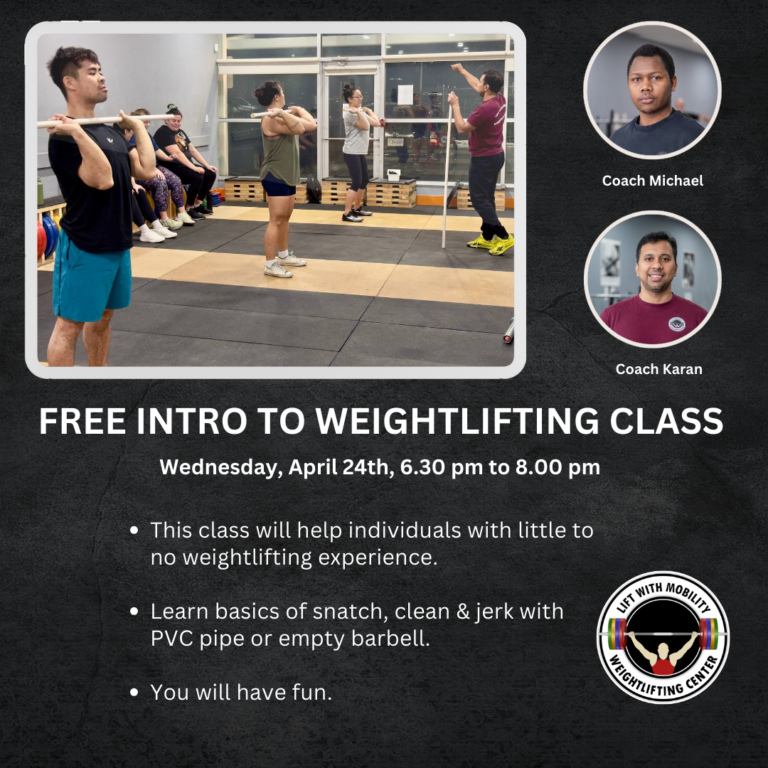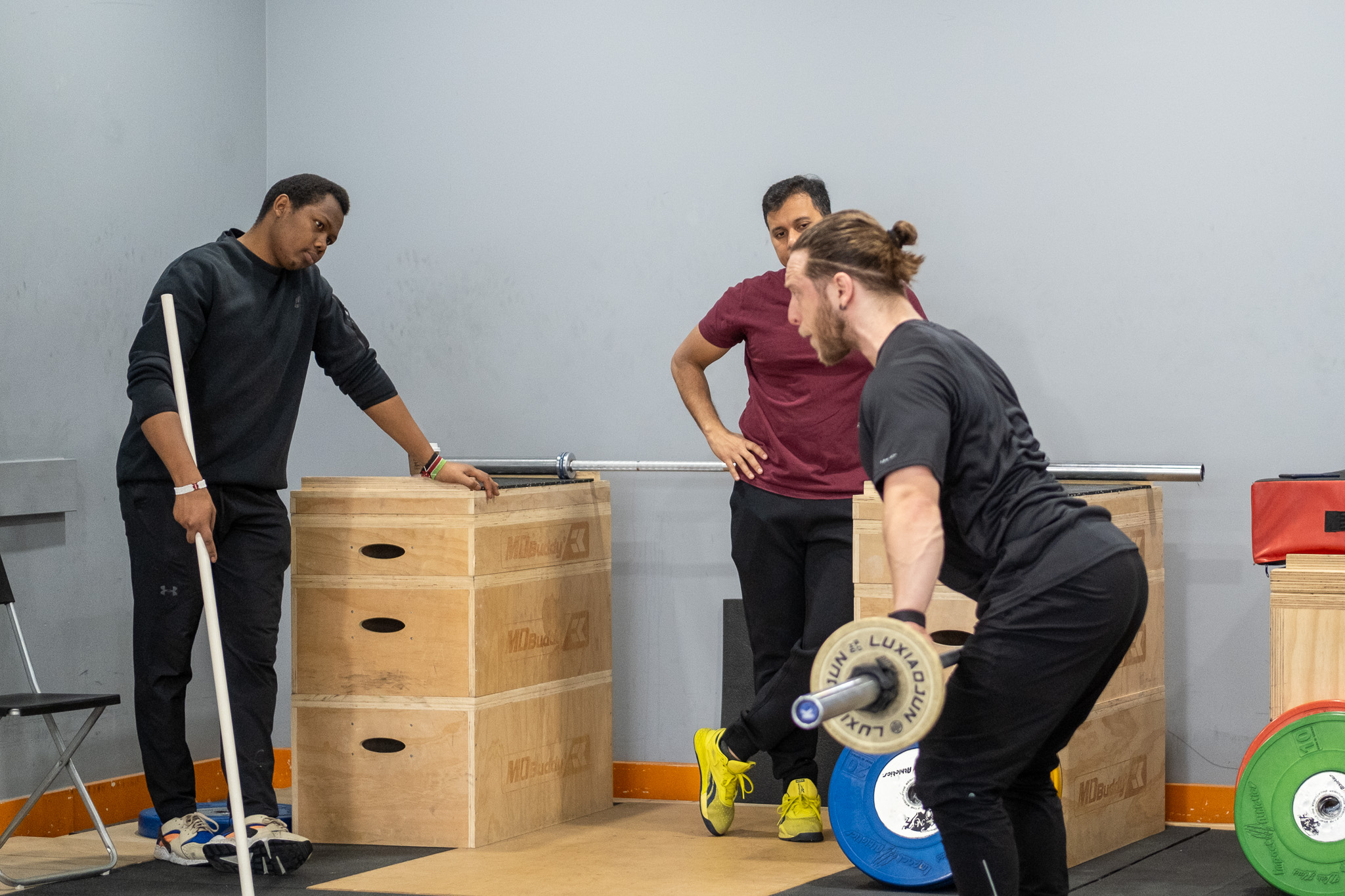
Olympic Weightlifting
The first of the two contested lifts in Olympic weightlifting is the snatch. The barbell is lifted from the ground to overhead in one fluid motion. In the snatch, a wider grip is utilized compared to the clean and jerk, ideally wide enough to place the bar right at the hip crease when one is standing with arms fully extended. The starting position involves a hip width stance with straight arms and shoulder over the bar with the torso fully extended and braced, eyes looking straight forward.
The lift is initiated by driving feet into the ground forcefully while maintaining the angle of the torso with arms extended until the bar passes the knees. The lifter continues to drive the feet into the ground, as the bar gets to the hips they fully extend the hips, knees, and ankles to generate as much power and create an upward momentum of the bar. Once this is achieved, the lifter pulls their elbows up and out to pull themselves into a squat under the bar bringing themselves into an overhead squat position. The lifter stabilizes the bar and then stands up with the bar overhead to complete the lift.
Importance of Myofascial Sling in Olympic Weightlifting –
Snatch is a highly athletic movement that involves the generation of power and speed with precision, which can only be achieved with adequate strength, stability, and mobility across all joints. This means that the myofascial sling system is highly involved in the movement. The myofascial sling system is a connective tissue system made up of muscles, fascia, and ligaments working together in a chain to create global stability and efficient movement, interacting to safely transfer load through the body, particularly from one side of the body to the other, and to allow proper proprioception between the upper and lower body.
In the kinetic chain (sum of all joints working together), the rule of thumb is that stable joints are followed by a mobile joint then a stable joint and so on i.e. foot stability-ankle mobility-knee stability-hip mobility, and that proximal stability equals distal mobility. All this is facilitated by the interconnectedness of muscle and connective tissue through the myofascial sling system. This is demonstrated well in the snatch, to achieve an optimal lift all these must be involved adequately.
Myofascial Sling Systems –
The myofascial sling system constitutes the following:
a. the posterior oblique sling which is involved in pulling motions and can be seen quite clearly with sprinting when the opposite arm and leg are pulled back at the same time or during the freestyle stroke of swimming.
b. the anterior oblique sling which helps with change of direction, rotation, acceleration and deceleration of the body.
c. the deep longitudinal sling which controls movement in forward and backward motions and provides stability to the pelvis and spine.
d. the lateral sling which facilitates side to side movements. It works to keep the pelvis balanced and level when walking or standing on one leg.
In the Olympic weightlifting movements (Snatch, Clean & Jerk), the myofascial sling systems are trained in every repetition which builds a very strong foundation for practicing many other sports. If you are looking to improve your sports performance, then Olympic Weightlifting is the best way to get better at your sport.
Start weightlifting today
Train with us at Lift With Mobility Weightlifting Center in Langley, BC.
We offer the best coaching and athlete development for Olympic Weightlifting and provide training programs for beginners & advanced athletes.
Come join us and achieve your weightlifting goals!
Lift With Mobility Weightlifting Team



